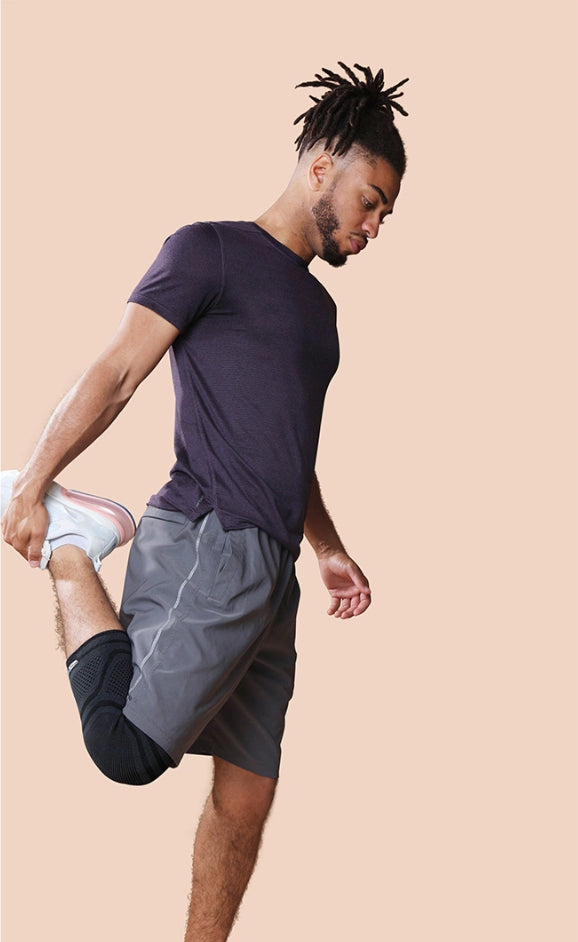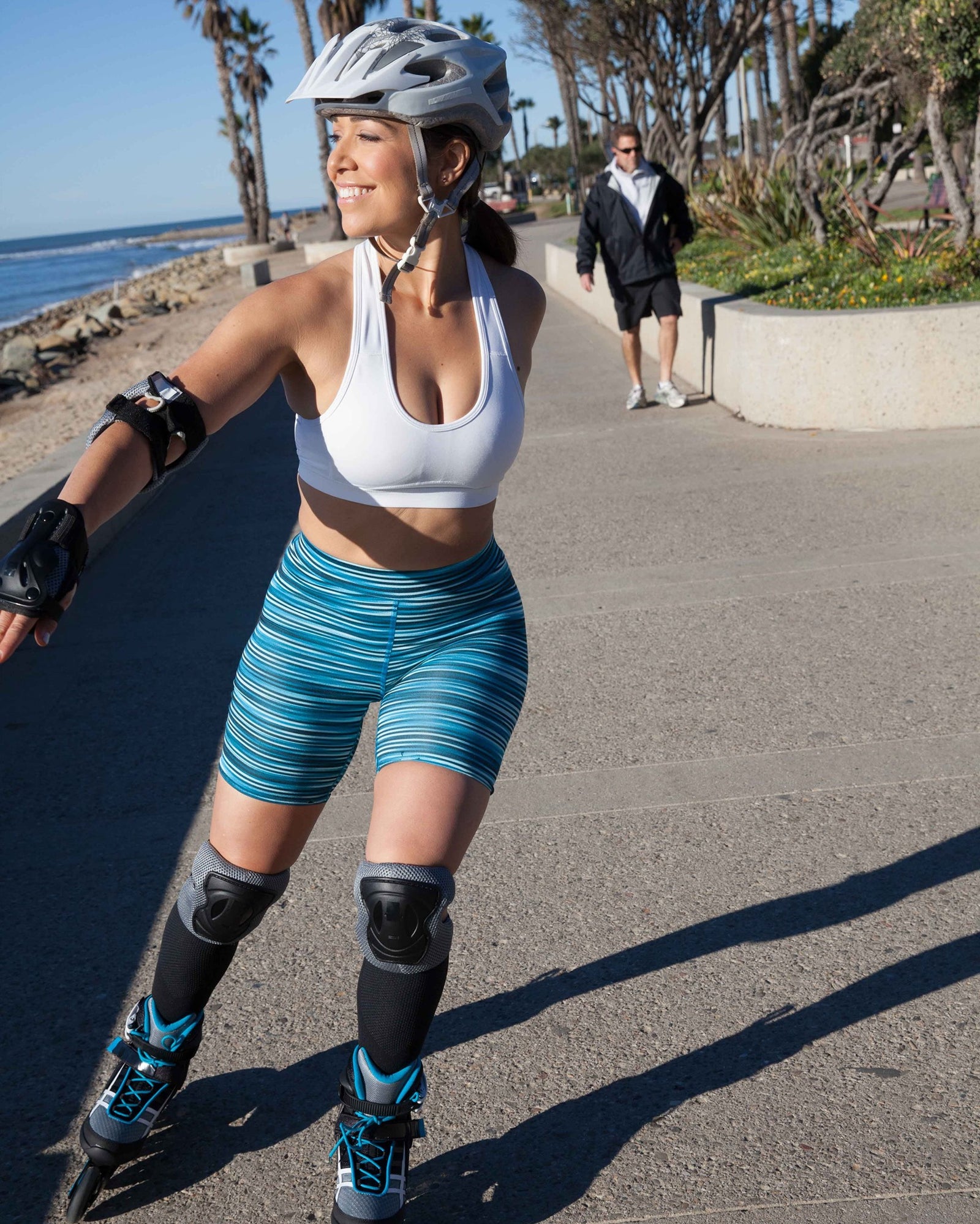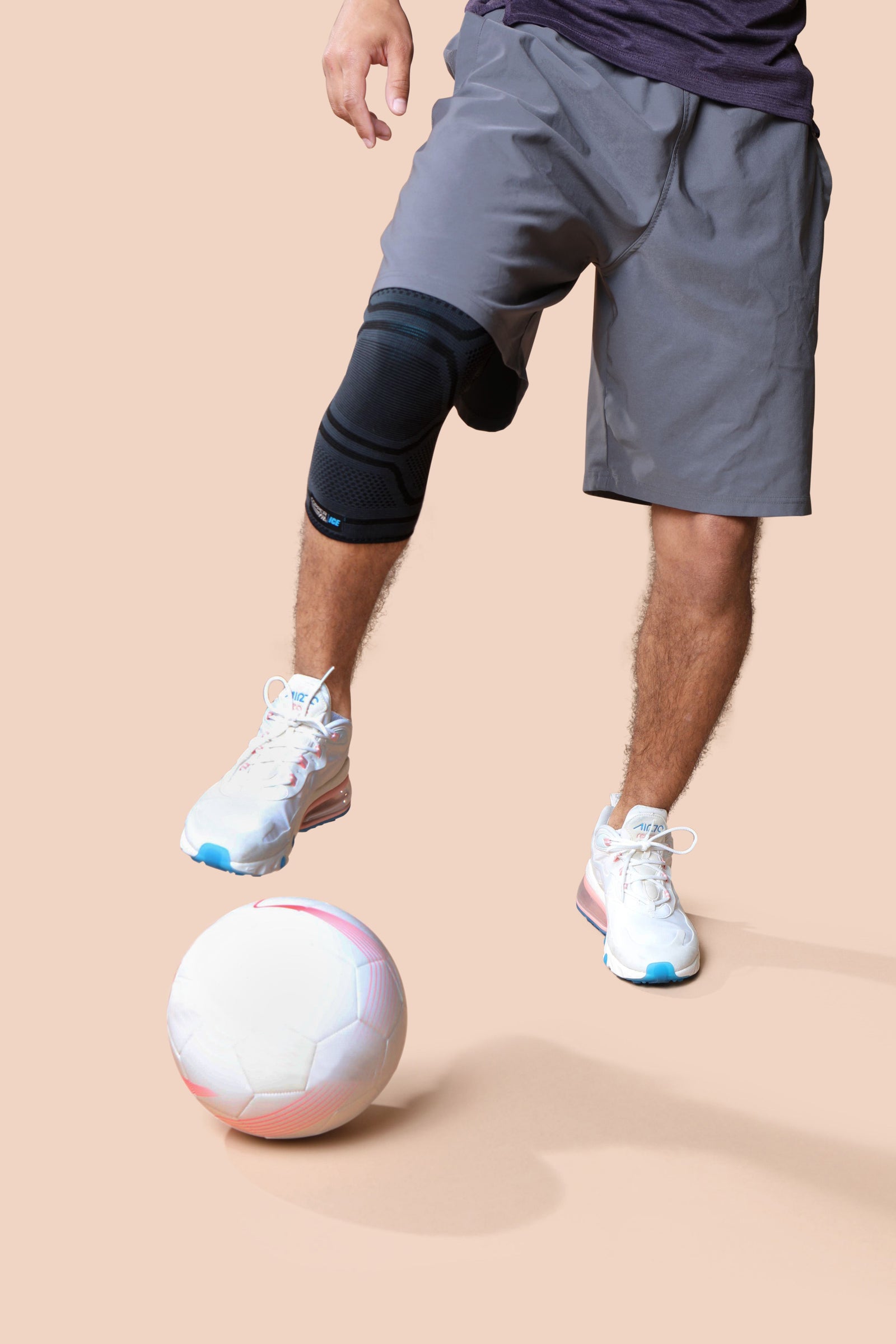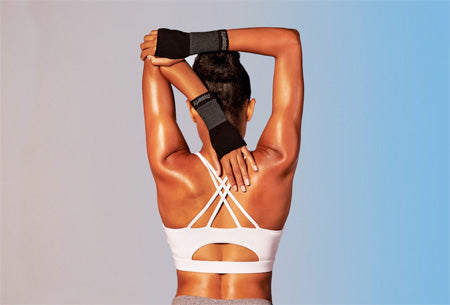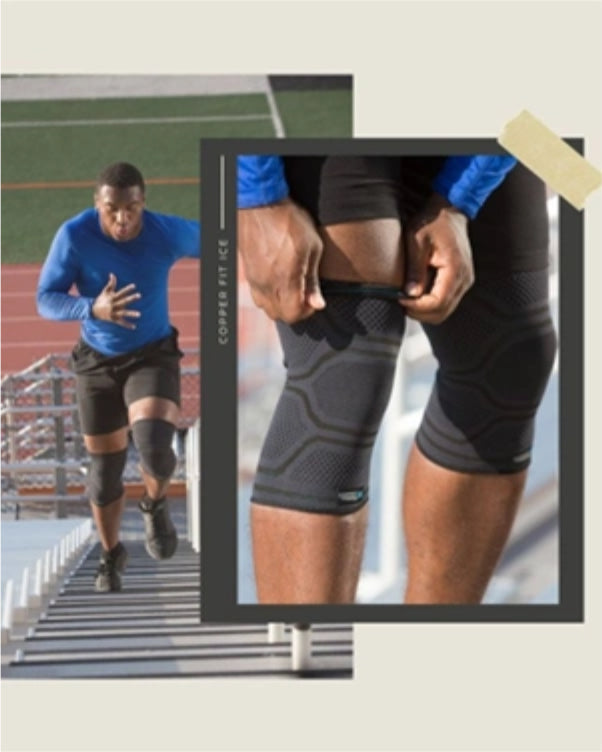
Key Takeaways:
- Spider veins are mostly harmless but can be bothersome. They’re small, visible blood vessels often caused by aging, genetics, hormones, or prolonged standing or sitting.
- Healthy habits can help reduce the risk and manage symptoms. Regular exercise, a balanced diet, maintaining a healthy weight, and avoiding long periods of sitting or standing can support vein health and minimize the development of spider veins.
- Consult a professional if symptoms worsen or cause concern. If spider veins are painful, swollen, or affecting your self-esteem, treatments like sclerotherapy or laser therapy are available, and a healthcare provider can help determine the best approach.
Spider veins, those small, web-like networks of red, blue, or purple veins that can appear on your legs and face, can be a source of discomfort and self-consciousness for many people. At Copper Fit, we are dedicated to providing solutions that support comfort and recovery, empowering you to stay active and feel your best every day.
This article will explore the causes of spider veins, how they can affect your health, and how lifestyle changes can help manage them.
What Are Spider Veins?
Spider veins, medically known as telangiectasias, are tiny blood vessels that become visible just under the surface of the skin. They are called "spider veins" because they often appear in a spider web pattern or thin, separate lines. These formations can occur anywhere on the body, but they are most commonly found on the legs and face.
Spider veins are generally harmless and typically don't cause pain or discomfort. However, some people may experience itching or burning in the affected area, especially when exposed to extreme temperatures or after prolonged periods of standing.
While they don't usually pose a health risk, they can be a cosmetic concern for many. Their noticeable red, blue, or purple color can cause individuals to feel self-conscious, especially when the veins appear on the face or other visible areas.
Who Can Develop Spider Veins?
Anyone can develop spider veins, but they are more common in women and individuals over the age of 50. Other factors that can increase your risk include having a family history of spider veins, being overweight, or having a job that requires you to stand or sit for long periods.
Pregnancy can also increase the likelihood of developing spider veins due to increased blood volume and hormonal changes. Despite their common occurrence, understanding what causes spider veins can help in managing their appearance and any associated discomfort.
What Causes Spider Veins?
Spider veins occur when the valves in your veins that help blood flow toward your heart stop working properly. These valves are designed to prevent blood from flowing backward due to gravity.
When these valves become weak or damaged, blood can pool in the veins, causing them to dilate and become visible under the skin. This pooled blood gives spider veins their characteristic color and web-like appearance.
Several factors can contribute to the development of spider veins:
- Hormonal Changes: Hormonal shifts that occur during pregnancy, menstruation, and menopause can lead to the formation of spider veins. Certain hormonal medications, like birth control pills, can also increase your risk. Hormones like estrogen and progesterone are known to dilate blood vessels, which could contribute to the formation of spider veins.
- Age: As you age, your veins can lose elasticity, causing them to stretch. This can lead to valve dysfunction, allowing blood that should be moving toward your heart to flow backward. The aging process can also weaken the walls of your blood vessels, increasing the likelihood of spider veins.
- Obesity: Carrying extra weight puts additional pressure on your veins, which can lead to valve damage and the formation of spider veins. The increased pressure can cause the veins to dilate, and over time, this can lead to the formation of spider veins.
- Prolonged Standing or Sitting: Standing or sitting for long periods can force your veins to work harder to pump blood to your heart. This can result in increased pressure in your veins, leading to the development of spider veins. Jobs that involve long periods of standing or sitting, such as nursing, hairdressing, or office work, can increase your risk.
- Genetics: If you have family members with spider veins, you're more likely to develop them yourself. Heredity plays a significant role in the development of spider veins, so if your parents or grandparents had them, you have a higher risk.
Understanding the causes of spider veins is the first step towards managing them effectively.
How Do Spider Veins Affect Your Health?
While spider veins are primarily a cosmetic concern, they can sometimes be indicative of underlying venous disease. However, it's important to note that spider veins are not the same as varicose veins, which are larger, bulging veins that can cause significant discomfort and may lead to more serious health problems.
Spider veins themselves do not typically cause health issues. However, if you experience pain, swelling, or a heavy feeling in your legs, or if the skin around your spider veins becomes sore or itchy, it's a good idea to consult a healthcare professional.
These symptoms can be a sign of underlying venous insufficiency, a condition where the veins have trouble sending blood from the legs back to the heart.
Potential Complications
Venous insufficiency can lead to complications like blood clots or open sores on your legs. It's also worth noting that if you're experiencing discomfort or pain in your legs, it could be a sign of a deep vein thrombosis (DVT), which is a serious condition that requires immediate medical attention.
While spider veins themselves are not usually a cause for concern, the presence of other symptoms along with spider veins should not be ignored. It's always best to get a professional opinion if you're experiencing any discomfort or changes in your veins.
Can Lifestyle Changes Prevent Spider Veins?
While not all spider veins can be prevented, especially those that are due to aging or genetics, several lifestyle changes can help reduce your risk and alleviate symptoms:
Regular Exercise
Regular physical activity promotes better blood circulation in your legs, which can help push the blood that has pooled in your veins back to your heart. Exercise also helps to lower your blood pressure, which can prevent the formation of new spider veins. Even simple activities like walking can have a significant impact on your vein health.
Healthy Diet
A diet low in salt and rich in fiber can help prevent the formation of spider veins. High-fiber foods can prevent constipation, which can contribute to venous insufficiency.
Reducing salt intake can prevent swelling caused by water retention. Additionally, foods rich in bioflavonoids, such as berries, peppers, and spinach, may help strengthen your veins and reduce the risk of spider veins.
Maintaining a Healthy Weight
Carrying extra weight puts additional pressure on your veins and can contribute to the formation of spider veins. Maintaining a healthy weight reduces this pressure, promoting healthier veins. Even a small amount of weight loss can make a significant difference in the health of your veins.
Avoiding Prolonged Standing or Sitting
Changing your position regularly can help promote better blood flow and reduce your risk of developing spider veins. If your job requires you to stand or sit for long periods, try to take short breaks to move around. Even small movements, like flexing your ankles or taking a short walk, can help improve blood flow in your legs.
While these lifestyle changes can help prevent spider veins and alleviate symptoms, they are not a cure. If your spider veins are causing you discomfort or you're concerned about their appearance, it's best to consult a healthcare professional for advice.
When Should You Seek Professional Help for Spider Veins?
While spider veins are usually harmless, there are situations where seeking professional help is advised. If you're experiencing pain, swelling, or discomfort associated with your spider veins, it's important to consult a healthcare professional. These symptoms could indicate an underlying venous problem that requires medical attention.
Additionally, if your spider veins are causing you distress or affecting your self-esteem, there are treatments available that can reduce their appearance. These include sclerotherapy, a procedure where a solution is injected into the veins causing them to collapse and fade, and laser treatments, which use light to cause the veins to fade or disappear.
Remember, it's always best to consult a healthcare professional if you have any concerns about your spider veins. They can provide you with personalized advice and treatment options based on your specific needs and health history.
FAQs
What vitamin deficiency causes spider veins?
While a single vitamin deficiency doesn't directly cause spider veins, vitamin deficiencies can weaken blood vessels and contribute to their development. Specifically, deficiencies in vitamin C and vitamin K are linked to vein health issues that can make spider veins more likely to appear.
Can you rub away spider veins?
Although massages performed by a qualified professional massage practitioner is bound to bring relief to a higher or lesser extent, it is not likely to make spider veins go away.
Is it better to be hydrated or dehydrated veins?
Hydrated veins generally appear less prominent and are better able to function due to optimal blood volume and viscosity, while dehydrated veins may appear more prominent, feel more fragile, and are at greater risk of complications.
Keeping Spider Veins From Crawling Out of Control
Spider veins, while mostly a cosmetic concern, can be a source of discomfort for some. Understanding what causes them and how lifestyle changes can help manage their occurrence is crucial.
At Copper Fit, we aim to support your comfort and recovery, providing products that can help maintain your comfort during your daily activities. Remember, if your spider veins are causing discomfort or you're concerned about their appearance, it's always best to consult a healthcare professional.
They can provide personalized advice and treatment options based on your specific needs. By staying informed and proactive, you can manage your health effectively and continue to lead an active, comfortable life.
Sources:
Sitting risks: How harmful is too much sitting? | Mayo Clinic
How Hormonal Changes Affect Skin Conditions | The Well by Northwell
Genetic Diseases that Affect Skin | Penn Dermatology
Deep vein thrombosis (DVT) - Symptoms & causes | Mayo Clinic

